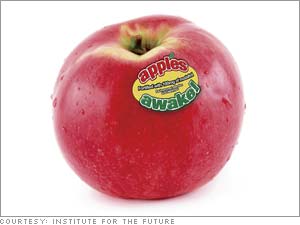Modern science tells us cognition is pattern-driven, metaphoric, unconscious, biased, mostly emotional and embodied. A far cry from the symbol manipulating computer seeking to maximize utility and juggling weighted alternatives that the more classical theory of rationality gave us.
This blog will take the modern characterization of cognition and unpack it to expose the implications for designers. For example, what does the fact that cognition is “embodied” mean to me as a designer? How will it help me to design better products, services or organizations?
Just a few days ago the Boston Globe published a news story that brought some attention to the idea of embodied cognition. The core idea is that we develop, learn and think using our bodies (motion, gestures eye movements). It is not just the brain but also our bodies that are the engines of thinking. In this way, cognition is “of the body” or embodied.
From a design standpoint, this puts a premium on sensorial, interaction and experiential design approaches but with an important spin – how can we use these techniques to engage the sensorimotor capabilities of the user to support and enhance cognition?
Consider for example how well Apple’s ClickWheel (or scroll wheel) on the iPod connects thumb/finder motion to the cognition of searching large lists and making a selection.
Engage the senses, engage the body and then engage the brain as a natural progression. This is what we are hardwired to do.
This means every cognitive designer (no matter what project they are working on) must answer the question:
How do the users think with their bodies?
Not your typical design stance.
The fact that we think with our senses and bodies and insist on doing so even when we a put in abstract situations (nearly all the metaphors we use are grounded in direct experience), creates some real challenges for design intangible products. Said another way, lack of embodiment is a major reason why the design of intangible artifacts fail. For example, think about the design of financial products or organizational change programs. They deal more with abstract concepts, delayed benefits and darn if I can hold one in my hand or even see it. Not very supportive of embodied cognition.
But you can change that through good design. My favorite example comes from the folks at the Institute of the Future and their work on prescient products . These are products that don’t really exist (that is intangible) but might in the future per the forecasts developed by the institute. So the product here is potential product concept based on a research-based forecast. Rather than just selling the intangible product as a written report, they mock them up and enhance the embodied cognition of their clients. Prescient products can now be touched, manipulated, smelled and so on. Check out the example of pharmaceutically enhanced fruit

Or another (source Wired Magazine) of the concept of soft drinks that burn calories when we consume them:

Imagine passing cans of this around to stimulate thinking and discussions on trends in nutrition, weight management and soft drinks. This reflects maximum respect for embodied cognition.
The design priority is to make the abstract concrete in a way that naturally engages the embodied brain.
Video games and virtual worlds are great at doing this — they give us bodies (or let us create our own) in simulated worlds and where we interact flexibly in real-time in rich and engaging contexts. A hyper-stimulant for the embodied brain. Adapting this effect to design non-entertainment applications (training, self development, etc.) is what the “serious game” movement is about. We will explore serious games and other techniques that promise to inspire superior designs for embodied cognition in future posts.


